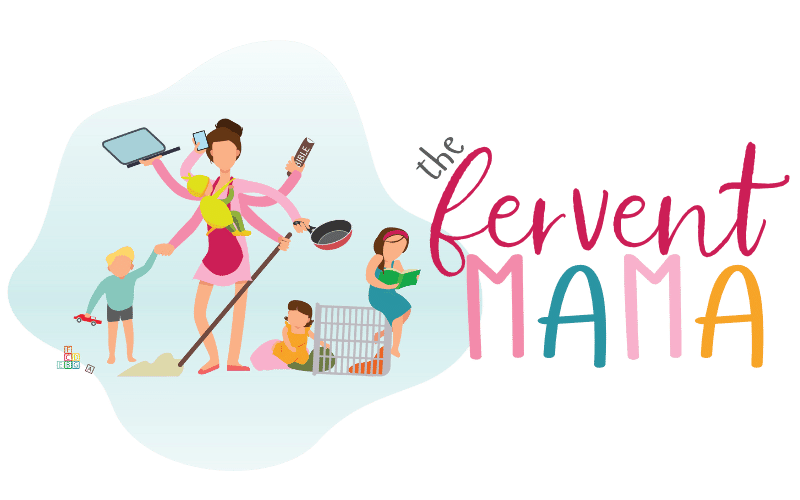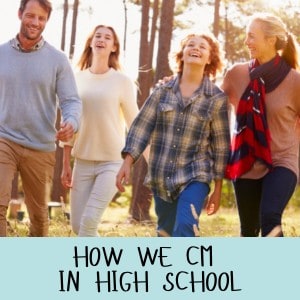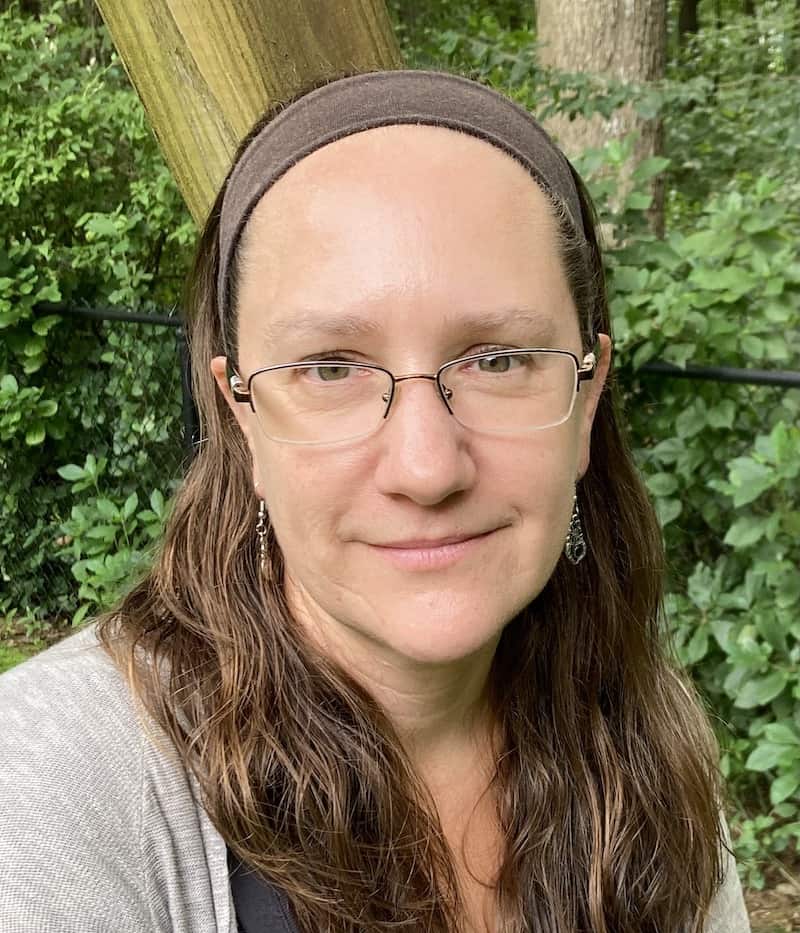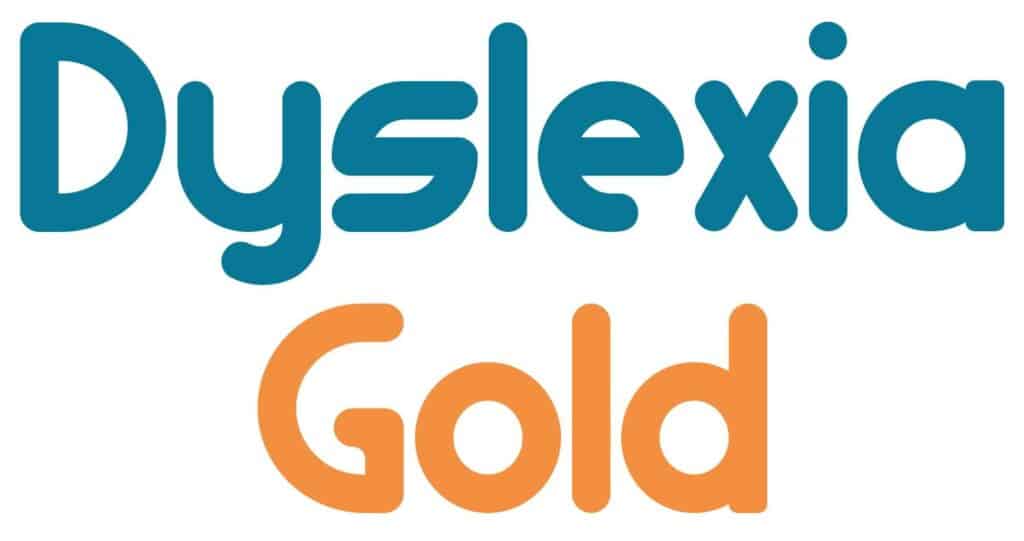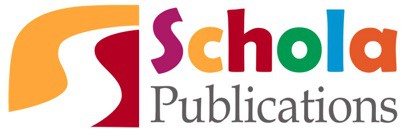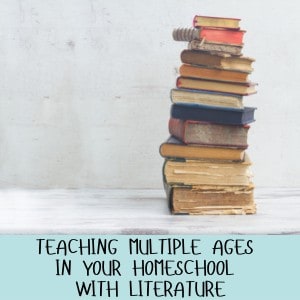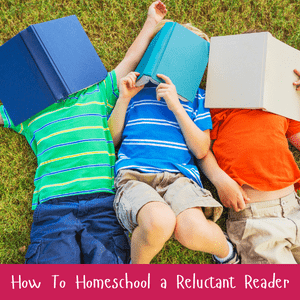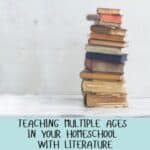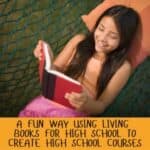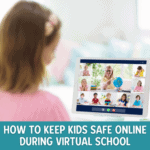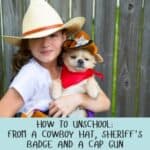How We CM in High School
The Fervent Mama uses Affiliate Links. See our disclosure policy here.
When my oldest began 9th grade, we briefly tried a more traditional approach but quickly decided that what we had been doing all along — a Charlotte Mason curriculum high school style approach to education with lots of living books and narration — was what we loved and what worked for us.
I have become convinced that high school is a time when your philosophy of education matters more, not less. Though worldly success is not our goal, college has always been in view.
How we Charlotte Mason in High School
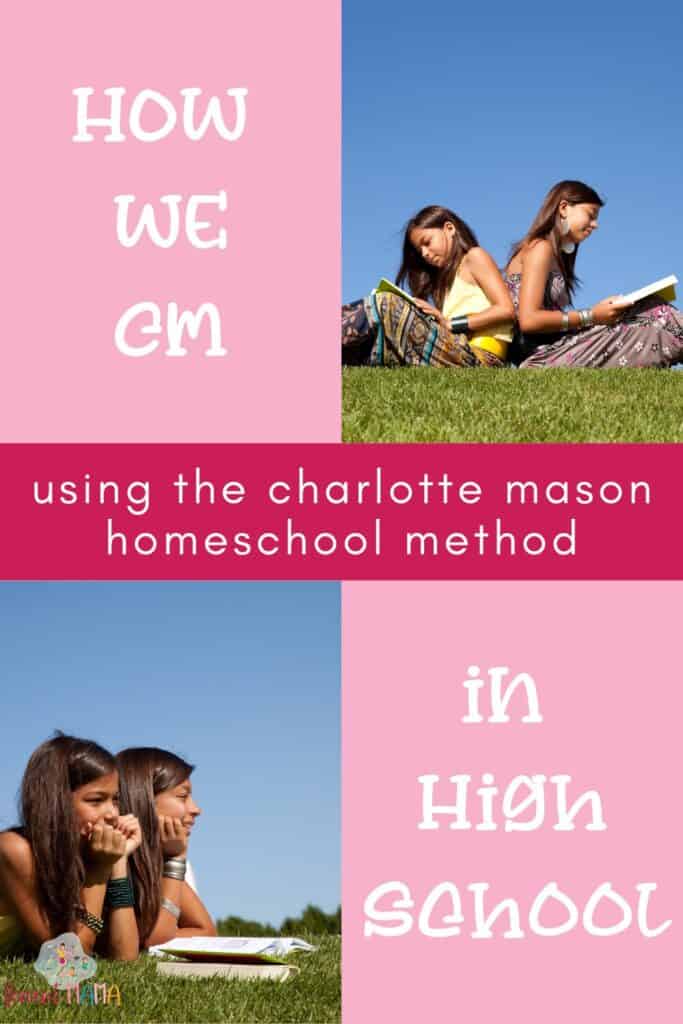
I have given credits with each subject so you can see how we count it on college transcripts. One credit = one full-year class. You can find out more about how we navigate the college application process here.
Part of a high schooler’s schedule. Abbreviations refer to specific books or classes.
Charlotte Mason for High School History (4 credits)
I try to get in some variety during charlotte mason curriculum high school so I can put down that my kids did both American and world history.
We all study the same era. This is easier for me and leads to good discussions at times when one kid hears another narrating and says, “Hey, that guy was in my book too but it said . . . about him.”
I don’t always have them narrate historical fiction but for the most part, everything is narrated. You can find my history booklists here.
Favorite authors for high school history: Edith Hamilton (Greece & Rome); Albert Marrin (mostly US history); Irving Werstein (US); Milton Lomask (US).
Charlotte Mason for High School Science (4 credits)
After a brief foray into trying something more traditional, we returned to living books for high school science. There are a lot of engaging books written for adults that they can use.
I generally did: biology, chemistry, physics, and then 12th grade the child’s choice. One did meteorology, one geology, one will be environmental science, and one an in-depth nature study.
I add hands-on labs for high school. My preference is to outsource them if possible. My science booklists are here. Some of our favorites: That’s the Way the Cookie Crumbles by Joe Schwarcz, The Periodic Kingdom by P.W. Atkins.
Inside Himself by George Gamow; Physics for Future Presidents by Richard Muller; The Darwin Myth by Benjamin Wiker; How to Clone a Mammoth by Beth Shapiro.
Charlotte Mason for High School Math (4 credits)

We did various things for charlotte mason in high school math depending on the child and their abilities. The curricula we have used included; Life of Fred, Math-U-See, and Teaching Textbooks.
My favorite approach was what I did with my younger two which was to use Ray’s Algebra and to combine it with geometry and later trigonometry, 2-3 days a week on each subject.
Charlotte Mason for High School Language Arts & Literature (4 credits)
Dictation
I usually dropped dictation after 10th grade. When we did do it, I found that kids did much better when I let them pick their own dictation passages from books they were reading. They then had a connection to the passage that made them enjoy it much more.
Grammar
My preferred grammar curriculum is KISS Grammar which is free online. KISS takes a functional approach, looking at how words are used. It uses sentences from real books, from fairytales to Dickens, in all its exercises.
We also used Life of Fred’s four-volume language arts series for charlotte mason in high school.
Literature & Literary Analysis
I introduce a little more intentional literature study. I have done this in slightly different ways but generally, I have them read a work in its entirety (without narrating it) and then do an essay on it.
I have sometimes used Great Courses lectures after the essay is done to give another perspective on the book as well. Books my kids liked best; Catch-22, The Great Gatsby, To Kill a Mockingbird, Of Mice and Men, The Maltese Falcon.
We did one year in “movies as literature” using Grant Horner’s Meaning at the Movies. Horner is a Christian and discusses movies genre by genre and talks about the creator’s intent and what worldviews they are communicating and how they show an innate knowledge of God even if they don’t have faith.
It is easy to read, discuss, and watch a movie for each section. The ability to distinguish another’s worldview, to see where they are coming from, is a valuable lesson that will carry over into other areas of life.
Writing

I introduce the idea of a five-paragraph essay. I am not terribly strict on the form. It is more important to me that they have their own style.
They are still doing both oral and written narrations and end-of-term exams which are longer works that require them to pull information together. I also assign essays as a part of their literature.
We never did a research paper as part of their schoolwork though the idea of citing sources came up in conversation so they knew that you should not use another’s ideas without giving them credit. Colleges tend to teach their own methods to freshmen anyway.
Three times a year we have an exam week. This is also a time when their writing skills are called on a bit more. For most subjects, they would be given an essay-type assignment for every book they had read.
I try to give choices and to keep questions open-ended. I did not grade these exams but would offer some degree of verbal feedback. Exams are for the child’s benefit, not mine. Below are some pics of exam sheets for my high schoolers.
The Arts (½ credit)
We did do some artist study together, enough to at least call it a half credit on their transcripts. Some of our favorite resources; Francis Schaeffer’s How Should We Then Live (book and/or video series; see also philosophy), Van Loon’s Art, Sister Wendy’s art videos (preview for content).
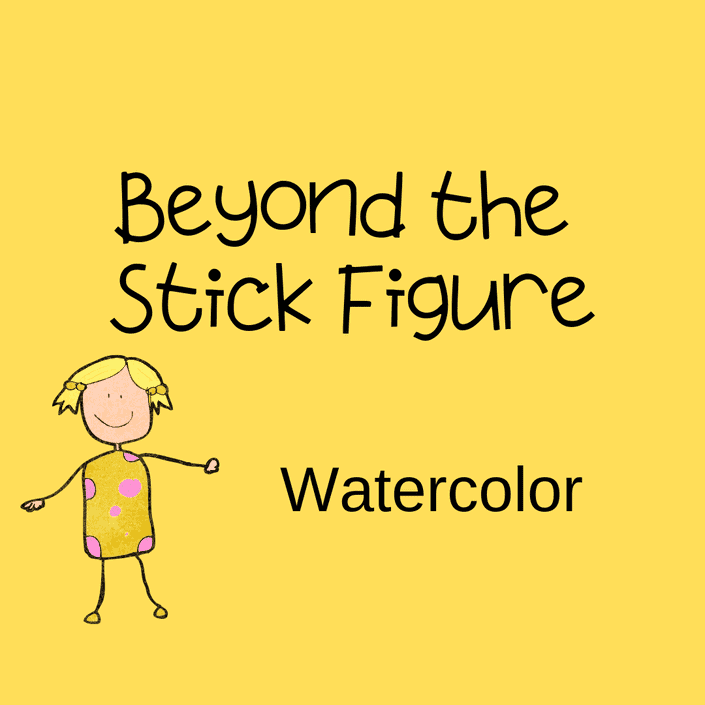
We didn’t do much music but one child did do an elective on the history of country music and another chose to take AP music theory. They also all took instrument and/or singing lessons at some point.
Drama & Shakespeare (½-1 credit)
We read Shakespeare plays aloud together, one per term. If at all possible we see a live performance. Not through any design of my own my kids ended up reading plays with a local group.
They would read a play together in one or two sittings and then see a production of it. Plays were picked based on the availability of performances.
Civics (1 credit)
For Mason, the study of Plutarch’s lives fills the place of civics in the curriculum. I’ll admit that we never did a lot of Plutarch though we did attempt a few lives.
For government, we used The Everything American Government Book. For economics, we used Lessons for the Young Economist. Those two together I call a one-credit civics class.
Geography & Nature (1 credit)
I would periodically have my kids read nature lore or geography. I find these subjects often overlap. Some good CM in high school level choices: Longitude by Dava Sobel; Tristan Gooley’s books; My Family and Other
Animals by Gerald Durrell; Curious Naturalist by Sy Montgomery; A Walk in the Woods by Bill Bryson; Edwin Way Teale’s books; Tracker: The Story of Tom Brown
Foreign Language (3-4 credits)
For CM in high school I let my kids pick a language and outsourced the class because a) languages are better learned through live instruction with someone who knows them well and b) this gave my kids academic teachers who knew them well to write college recommendations.
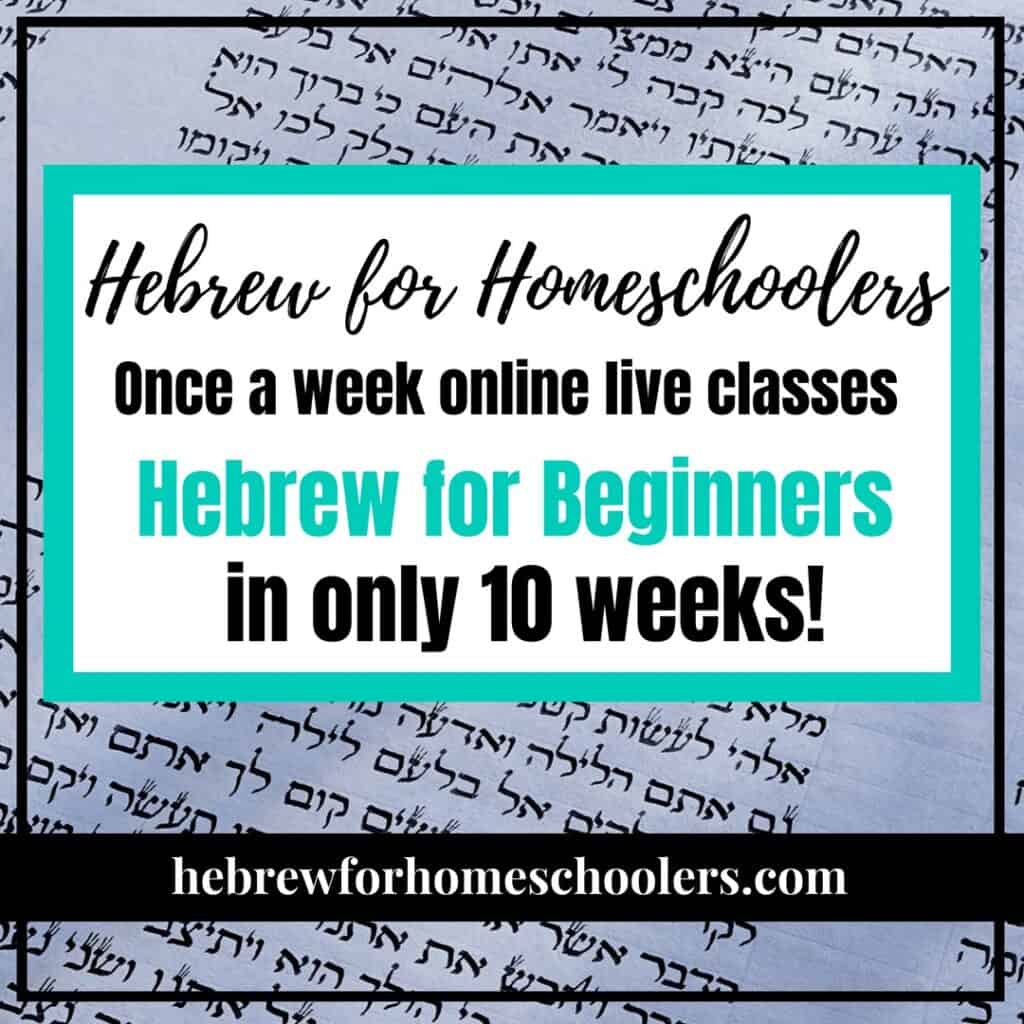
Theology (1 credit)
When you start to be able to discuss meaty ideas with your kids, life gets really fun. We had always done some sort of Bible study together.
When we Charlotte Mason in high school we also read Calvin’s Institutes (over many years) together.
Other theology recommendations; What is a Christian Worldview? by Philip Ryken; Stepping Heavenward by Elizabeth Prentiss (for girls); Golden Booklet of the True Christian Life by John Calvin; The Hand of God and Satan Cast Out by Frederick Leahy; A Handful of Stars by Frank Boreham; Introducing Evangelical Theology by Daniel Treier
Philosophy (1 credit)
My goal with philosophy is to give them a sense of the viewpoints that are out there, how to recognize them, and how to evaluate them. It was not to give them a thorough grounding in classical philosophy.
Some of our favorite resources for this were; Francis Schaeffer’s How Should We Then Live (book and/or video series) and Benjamin Wiker’s 10 Books that Screwed up the World and 10 Books Every Conservative Must Read.
How We CM in High School
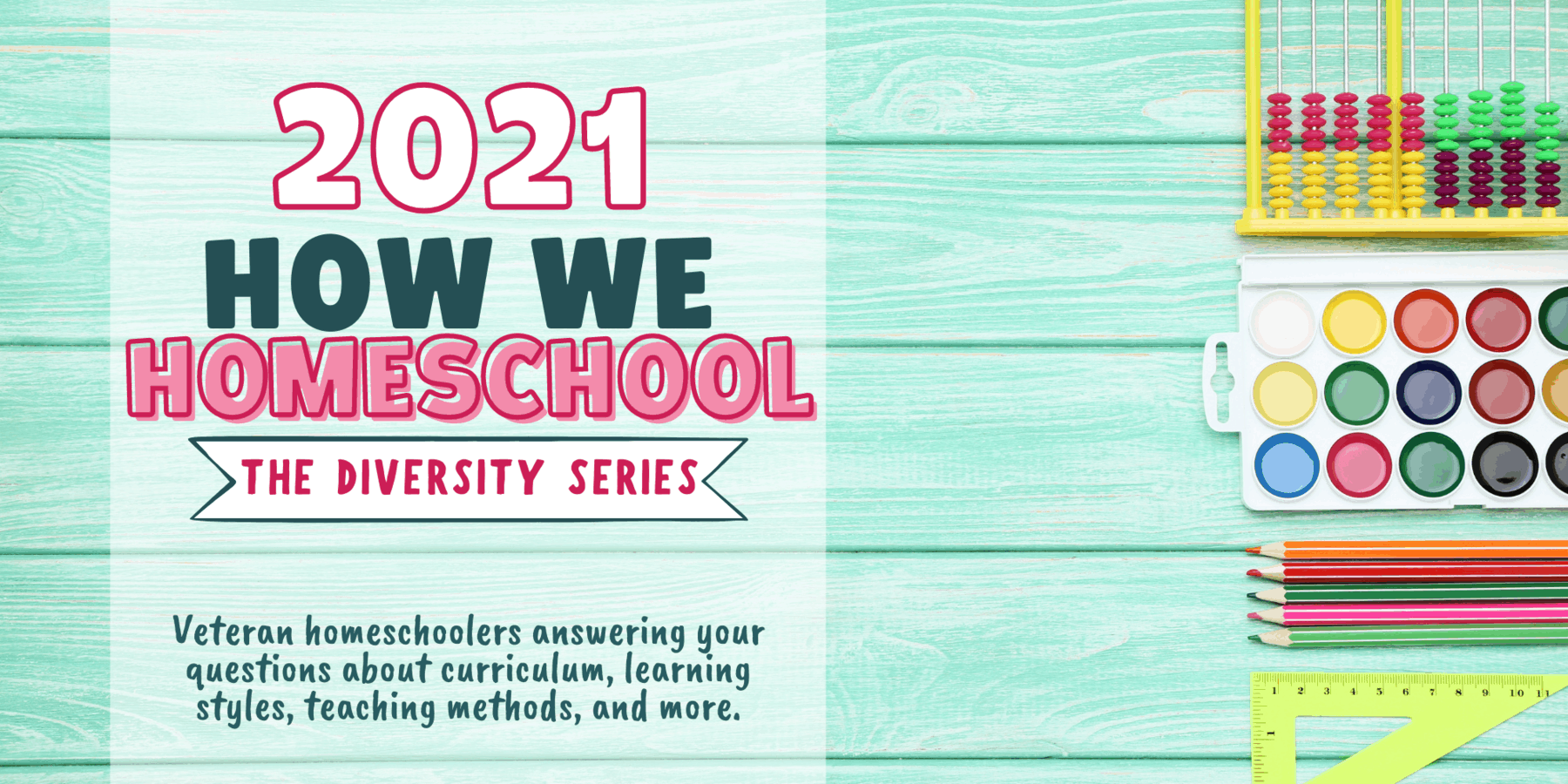
This is a contributed post for the 2021 How We Homeschool Series.
Learn more about the How We Homeschool Series, contributors, sponsors, and giveaways by heading here.
